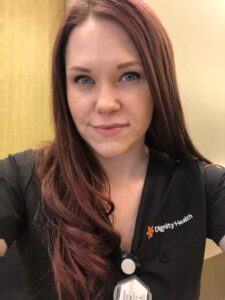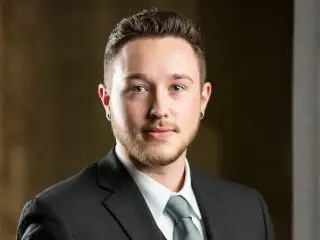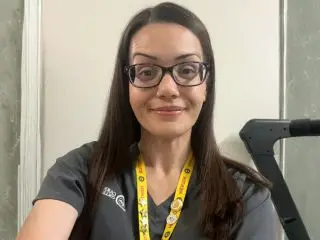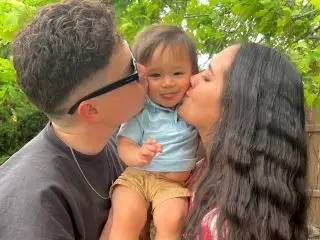
Amanda knew she wanted to work in medicine—she just wasn’t sure which field would be the right fit. After a year studying pre-med at Arizona State University, she decided to attend an information session on careers in radiology and other hospital clinicians. That’s where she first read about careers in respiratory therapy.
She learned that respiratory therapists (RTs) rarely are on call, often move throughout different parts of the hospital, and are one of the first responders when patients code. The role sounded like the perfect balance of freedom and excitement. To make things even sweeter, there appeared to be a strong demand in the job market for RTs, so there would be long-term career stability. Amanda very quickly knew becoming an RT was the right career path. She enrolled at Carrington (then Apollo) soon after and graduated in 2009.
“I don’t think there could be a better job for me, ” she says eleven years later, even in the midst of the COVID19 pandemic that has directly impacted her work.
As of writing this, more than 100,000 Americans have died from COVID19. Cities like Phoenix, Arizona, where Amanda works on the ICU team at St. Joseph’s Hospital & Medical Center with around twenty other respiratory therapists, are still struggling to bring down their active case numbers. Amanda’s ICU treats patients from throughout Arizona, including many from the Navajo Nation, which has the highest rate of COVID-19 in the entire country due largely to a lack of running water in approximately 30% of Navajo homes.
“We are on our 5th COVID ECMO right now. They (COVID patients) are not treated like the patients that we usually have like a lung transplant or ARDS,” Amanda said. “Everybody has to come together and learn because this disease has so many different ways of affecting people.”
ECMO is Extracorporeal Membrane Oxygenation and it is often reserved for lung transplant patients like those at St. Joseph’s Norton Thoracic Institute, as well as those experiencing life-threatening symptoms that aren’t responding to traditional methods like conventional oxygen therapy and mechanical ventilation. In addition to ECMO, respiratory therapists focus on administering machinery such as ventilators, nebulizers, CPAP–to name just a few. They also monitor secretion levels, blood gas, pulmonary function, FEV1/FVC ratio, etc.
Amanda loves working in the ICU at St. Joseph’s, but she didn’t get there overnight. She credits hands-on learning through her clinicals at Carrington and an “amazing instructor” as being instrumental in helping get her to where she is today. She spent the first five years after graduation at Arrowhead Hospital, where she had built a strong professional connection during her Respiratory Care program.
That professional connection really came in handy because she graduated into an economic recession and many hospitals had hiring freezes at the time. It was at Arrowhead that Amanda learned more about time management and treatment modalities while further developing her confidence with patient interactions and staff relations. That is also where she first got her foot in the door with the ICU and decided that home care wasn’t a good fit.
She said, “I worked in home care for a company called Rotech simultaneously for two of my years at Arrowhead. Although that was not something I’d like to do again, I value what it taught me about caring for future patients.”
Her time accumulating knowledge and experience at Arrowhead ultimately lead her to St. Joseph’s where she has spent the past six years dedicating her time to what she loves most: critical care. It is clear that every one of Amanda’s experiences built on the next, as she made connections, learned more about respiratory therapy, and advanced her career over time. Now she has been at St. Joseph’s for over six years.
Last year, she even completed an online Bachelor of Science in Professional Development and Advanced Patient Care. She plans on getting her Acute Critical Care Specialty certification next and can see herself going back to school to become a physician assistant. She just isn’t sure if she wants to take out student loans since she has paid all of hers off and it feels great to be in the clear, enjoying her life and career!
“This is all proof that there is no one way to master medicine and we are forever in practice. I love my career and the teams and future learning that comes along with it. There’s nothing I’d rather do.”



